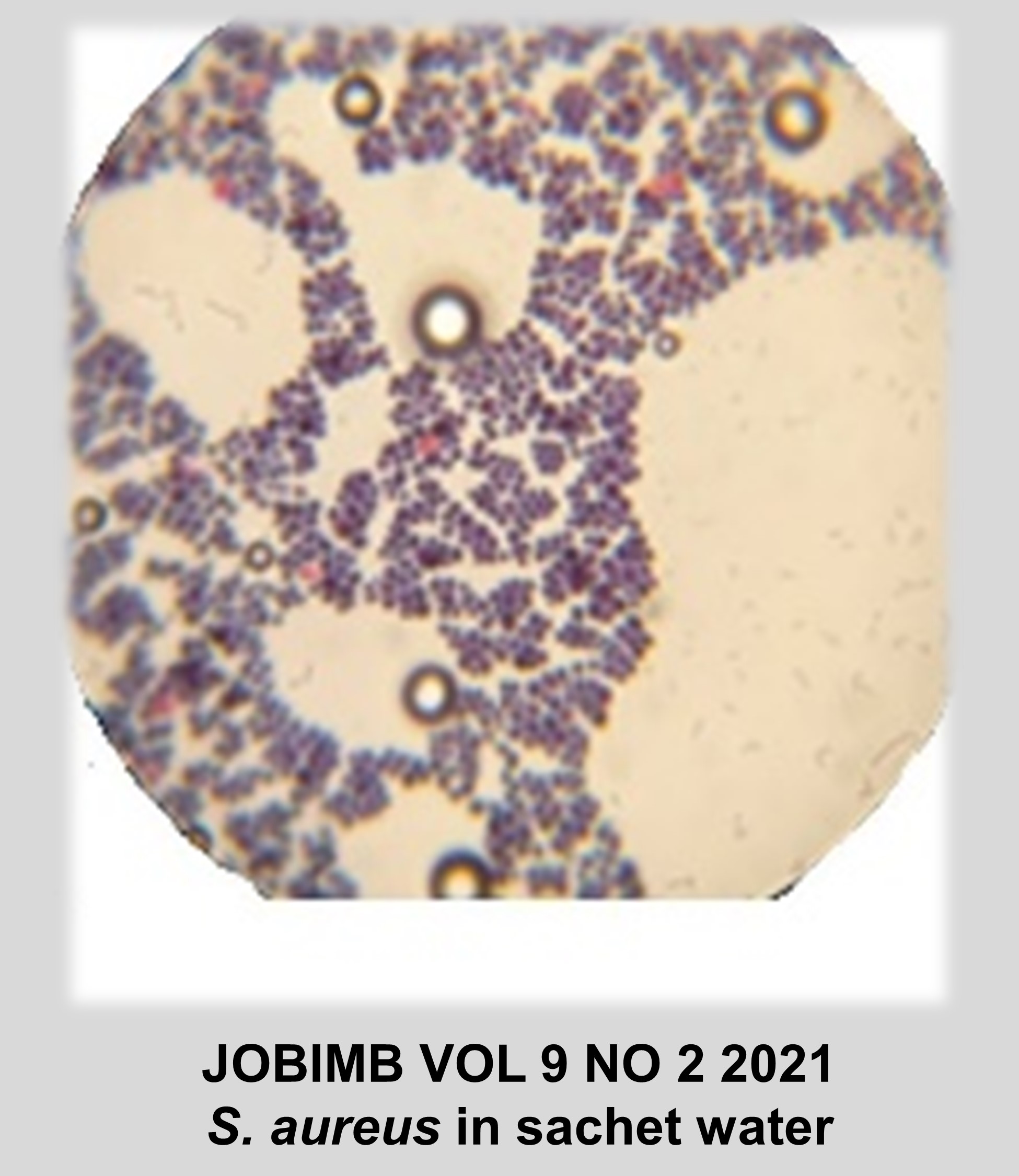Prevalent of Staphylococcus aureus from Sachet Waters Sold in Different Areas of Jos Terminus Market, Nigeria
DOI:
https://doi.org/10.54987/jobimb.v9i2.616Keywords:
Sachet water, Staphylococcus aureus, Public health, Jos Terminus Market, NigeriaAbstract
Staphylococcus aureus is an important human pathogen that causes wide range of infectious diseases both in nosocomial and community settings. The Gram-positive pathogen possess virulence factors that facilitate it to establish infections in the hosts. When a “water for life†is contaminated with infectious bacteria such as Staphylococcus aureus then, there may be public health challenge in the area. In this study Samples of Sachet water of different companies ware purchased, marked E, T, C and R and examined for the presence of staphylococcus aureus. Total of 80 sachet waters were examined and a prevalence rate of Staphylococcus aureus 5(25.00%) was recorded. The study revealed that sachet water (E) has the highest prevalence of 15.00%, followed by T (5%) and C (5%) and R had the least prevalence with 0.00%. It was discovered that a Prevalence rate of Abuja market terminus recorded 1(5.00%) while that of Ahmadu Bello way has the highest prevalence of 2(10.00%), Yan Taya market 1(5.00%) and railway 1(5.00%). This shows that S. aureus can be isolated from sachet waters. Though the sachet eaters had NAFDAC numbers, it is advisable to review and quality control such sachet water companies regularly because of Staphylococcus aureus and other public health infectious agants. The populace should equally be careful with the type of waters they drink.
Downloads
Published
How to Cite
Issue
Section
License
Authors who publish with this journal agree to the following terms:
- Authors retain copyright and grant the journal right of first publication with the work simultaneously licensed under a Creative Commons Attribution License (http://creativecommons.org/licenses/by/4.0) that allows others to share the work with an acknowledgement of the work's authorship and initial publication in this journal.
- Authors are able to enter into separate, additional contractual arrangements for the non-exclusive distribution of the journal's published version of the work (e.g., post it to an institutional repository or publish it in a book), with an acknowledgement of its initial publication in this journal.
- Authors are permitted and encouraged to post their work online (e.g., in institutional repositories or on their website) prior to and during the submission process, as it can lead to productive exchanges, as well as earlier and greater citation of published work (See The Effect of Open Access).



